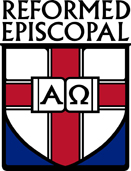
The History of CHC...

Our Beginnings
The fifteen acre meadow on which the church stands once served as a place where Native Americans held spiritual gatherings. Later it became a rest stop for cattle drives along the Preston Trail. Eventually, in the latter half of the 19th century, the pioneer village of Frankford carved out a space in the midst of this ancestral convening place. From the beginning it included a mission and cemetery. The present white clapboard prairie-gothic chapel, dedicated in 1899, was originally a Methodist chapel and later an Episcopal mission and parish, the Church of the Holy Communion. Today, this historic site has become a quiet refuge from the restless energies of an encircling city and in April 2006, the parish completed and dedicated its new 350 seat brick and stone church building. We also enjoy the recently constructed parish hall needed to accommodate its growing membership.
In 1998, the Parish established the Holy Communion Christian Academy (formerly Bent Tree Episcopal School), a pre-school with a focus on 18-month old through kindergarten students, which during its life has gained a high degree of success and acceptance in the north Dallas community.
The Church of the Holy Communion (CHC) was founded in 1963 as a mission of the Episcopal Diocese of Dallas. From 1963 to the present, the parish has grown and expanded while maintaining its historic commitments to biblical and traditional Christianity. In 1986, after change of the prayer book was mandated, the parishioners, unhappy with the decree, asked the bishop to release them from the diocese to be free to use the 1928 Book of Common Prayer. The request was granted and CHC was independent until 2002 when the parish affiliated with the REC.
CHC - Our Services
The worship of CHC (Church of the Holy Communion) follows the historic 1928 Book of Common Prayer, produced originally in 1549 by the famous English Reformer and Archbishop Thomas Cranmer . It is spiritual with approximately 85% of its content being taken directly from the Bible. It is also more than a sixteenth-century document. To compile his liturgical masterpiece Cranmer edited the medieval mass, itself rooted in the ancient liturgies of the Church of Ephesus (1st Century) and the Sarum Rite (9th century). The 1928 BCP Book of Common Prayer) more closely approximates the original 1549 version as well as the 1662 edition, still the official prayer book of the Church of England and used by the majority of the 70 million member worldwide Anglican Communion. We worship in a truly common prayer tradition.
The two central services of the prayer book offered weekly at CHC are founded upon the spiritual practices of the Early Church described as continuing steadfastly in the Apostles' doctrine and fellowship, and in breaking of bread, and in prayers (Acts 2:42). The breaking of bread is the service of Holy Communion. Early Christians also worshipped with literally, the prayers, set prayers dating back to the Psalter and the synagogue. This service became the Daily Office, traditionally known as Morning and Evening Prayer in the prayer book.
Adult Communicants from other churches are welcome at our altar under the conditions of the invitation (BCP 75). It is the custom of this church that children do not receive communion until confirmed (BCP 299).Both adults and children may receive a blessing at the altar rail by folding arms across the chest.
CHC's National Affiliation - The Reformed Episcopal Church
The Reformed Episcopal Church (REC) takes it name and its doctrine from the Reformed Church of England, the original name of the Church of England. The REC was founded in 1873 with a vision of continuing the historic, classically Anglican Church, which is nothing less than catholic faith and order re-established in the 16th century English Reformation according to Scripture and ancient tradition. The REC prayer book is based on the 1662 BCP used by most of the worldwide Anglican Communion.

At the time of its establishment, the REC was concerned to maintain the old paths of traditional Anglicanism. These paths consisted of a commitment to the historic formularies of the Anglican Church: Scripture, Catholic Creeds, the Prayer Book and the Articles of Religion. This commitment is lived out in two great worship traditions, Holy Communion and Morning Prayer. The dangers facing Anglicanism in the late 19th century placed the Morning Prayer tradition in jeopardy. The seeds of further departure from the faith in the 20th century were already being planted. Just as the 19th century saw challenges to the Morning Prayer tradition, the 20th began rewriting other aspects of time proven Anglican worship. This marked a complete redefinition of historic Anglicanism. Thus, Reformed Episcopalians were alerted of the need to establish a jurisdiction where Biblical and classic worship, belief and practice could continue to flourish.
The profound liturgy of Anglicanism remains intact in the Reformed Episcopal Church. The REC prayer book is based on the 1662 BCP used by most of the worldwide Anglican Communion. The REC also allows use of the 1928 BCP, the edition that most closely resembles the original prayer book of 1549. There are 160 REC parishes (US and Canada), approximately 15,000-20,000 communicants and eleven active Bishops, one of whom is our very own Bishop Ray R. Sutton.

Connect With Us
Contact Us Today For More Information - (972) 248-6505